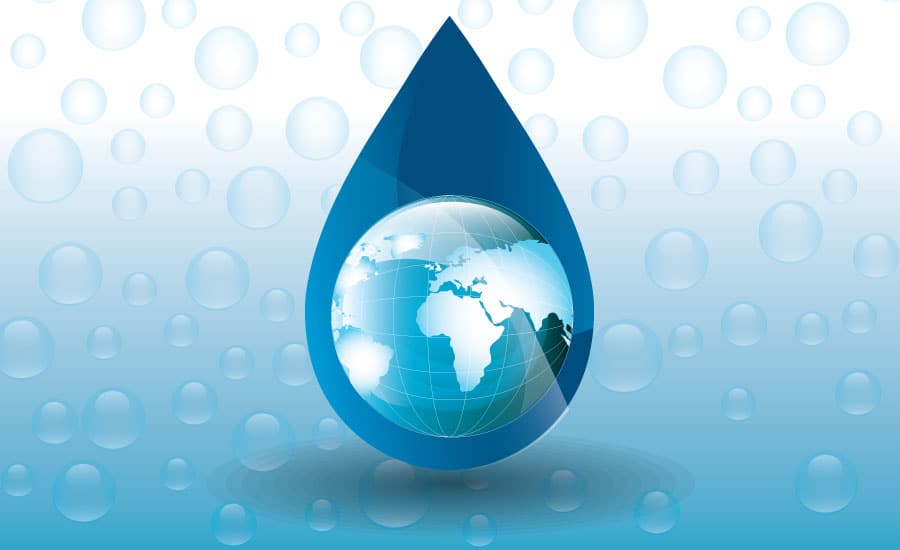
Essay on the Importance of Sustainable Water Management
A necessary step in reducing adverse impact on fresh water as well as on marine environment, is to use water more efficiently. A fundamental strategy in sustainable water management is to integrate water management goals into physical, social and economic planning. It includes agriculture management, overall land use planning, forest resources utilization, protection of coastal zones and marine environments from land based activities. It can assist planners in achieving more efficient water use.
1. Water Conservation Strategy:
Conjunctive use of surface and groundwater should be encouraged to shorten the water use and to alleviate the degradation of water and soil resources. Various technologies for groundwater recharge such as use of dug-wells, ponds, water harvesting structures in drains and rivers should be studied for feasibility.
2. Rainwater Harvesting:
Rainwater harvesting is defined as a method to induce, collect, store and conserve local surface run-off for agriculture in arid and semi-arid regions. Basically, for run-off inducement, vegetation management, surface treatment and chemical treatment are involved. Vegetation management is more effective in areas having an annual rainfall of more than 280 mm.
Arid zones are beset with water shortage caused by low annual rainfall. The problem is often overcome by the introduction of irrigation, provided surface or ground water is available. An efficient drainage system is necessary to maintain a favourable salt balance for crop growth. Broadly, miro catchment water harvesting and run-off farming water harvesting are the main run-off collection methods. The aim of micro catchment water harvesting strategy is to store sufficient runoff water during the rainy season so as to meet the water requirements of crop growing. Other method is to collect the rain water in small digs and then recycling it.
Appropriate water conservation strategies, such as rainwater conservation by terracing slopes and different means of water storage, including underground storage will differ according to the characteristics of the region and are particularly important in arid areas.
3. Irrigation Management:
Other potential measures include improvements in irrigation management, such as lining canals and using high- efficiency irrigation systems to prevent land degradation through salinization and water-logging. Using treated waste-water for irrigation increases the fresh water available for other uses, including the maintenance of healthy aquatic ecosystems. Decreased use of fertilizers in agriculture can reduce the need for expensive treatment of water from nearby water bodies to make it suitable for human use.
4. Watershed Management:
One of the simplest strategies to improve both water supply management and water quality is the protection of watersheds through maintenance of naturally vegetated buffer strips along streams, river channels and around lakes.
There is a difference between watershed and a river basin. According to one group of thought, the area that drains water into a river is described as watershed and the boundary line between adjacent watersheds is called the divide. The other group defines the area drained by a river as catchment area or river basin. Kenneth Brooks has distinguished on the basis of scale. The line between adjacent areas is called the watershed. The river basin is larger than a watershed and covers the total area that drains through the river and its tributary system.
Watershed management must be considered as a process of participatory planning, implementing, monitoring and evaluating a course of action involving natural, human and other resources. An holistic soil conservation and watershed management approach should consider those physical, socio-economic and institutional linkages that exist between upstream and downstream of a river basin or watershed.
5. Wetland Preservation:
It is an important element of watershed protection. The resulting gains in water quality and natural water storage can reduce the need for, and therefore, the costs of water-treatment and storage downstream.
6. Establishment of Effluent Treatment Plant (ETP):
Installing an effluent treatment plant is the first step to control industrial pollution. The effluents are treated according to various standards such as river standards, inland water-bodies and sewer standards, depending on where the treated water has to be drained.
7. Community Participation:
Community involvement in the construction, operation, maintenance and funding of water systems should Strengthen village institutions. On the other hand, women’s organisations must organise awareness programmes which will enable the women to realise the scarcity of water and consequently take steps to conserve it.
Essay on the Importance of Sustainable Water Management
What is the Assam National Register of Citizens?












